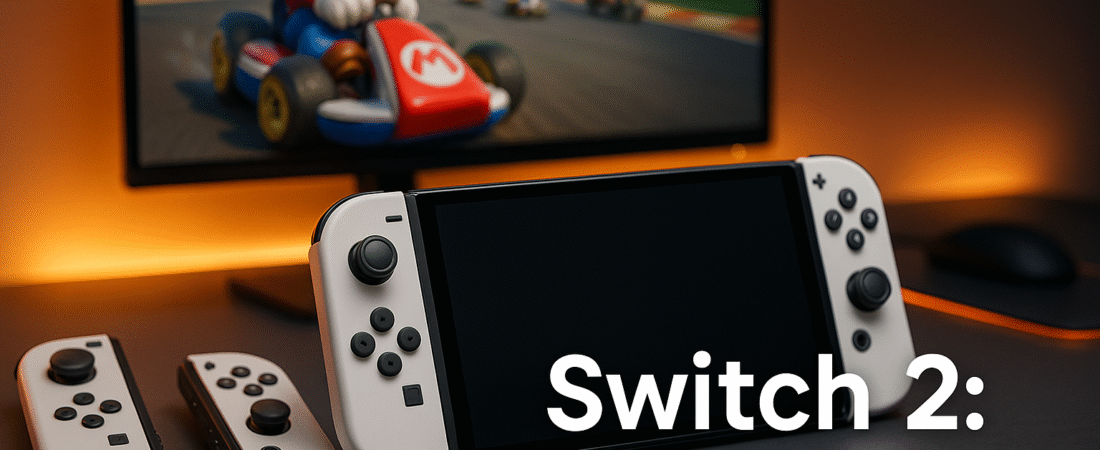After a week with Nintendo’s latest console, we’re answering the biggest questions gamers have about the Switch 2. From battery life concerns to whether you can only play Nintendo games, here’s what you actually need to know before spending $450.
Is the Nintendo Switch 2 Worth It?
Short answer: It depends on what you’re upgrading from and how much you value performance.
If you’re coming from an original Switch (not OLED), the upgrade is substantial. The Switch 2 delivers “10x the graphics performance” according to Nvidia, with 1080p handheld gaming, 4K docked output, and dramatically improved loading times. Games that barely ran on Switch 1 now play smoothly.
For Switch OLED owners, the decision is trickier. You’re paying $450 for better performance and access to new exclusives like Mario Kart World, but your current console still plays great.
For newcomers to Nintendo, absolutely worth it. You get access to the entire Switch library plus next-gen exclusives, all on one console.
The Battery Life Problem Everyone’s Talking About
Yes, the battery life is disappointing. Despite a larger 5220mAh battery, the Switch 2 is rated for just 2-6.5 hours compared to 4.5-9 hours on newer Switch models. The more powerful hardware demands more juice.
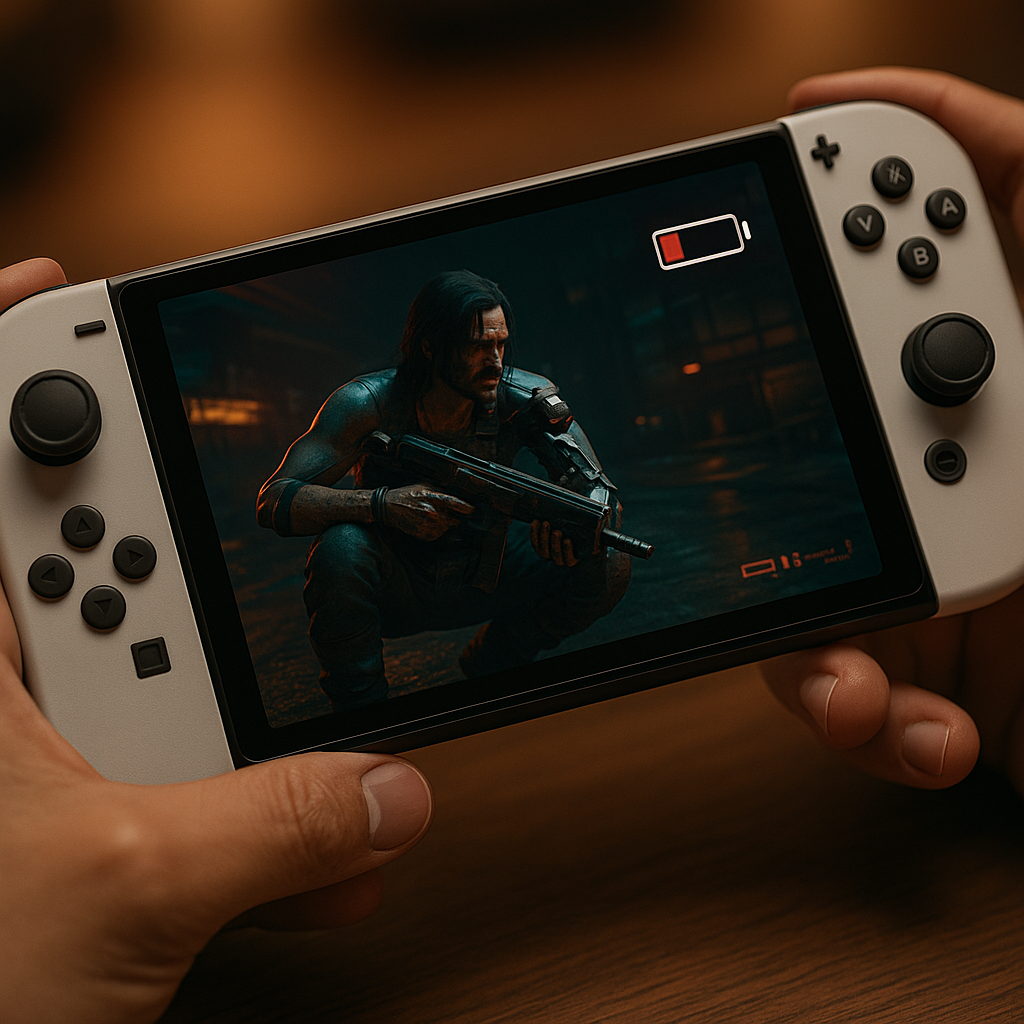
Real-world testing shows:
- Mario Kart World: ~4 hours
- Cyberpunk 2077: ~2.5 hours
- Zelda (upgraded): ~3.5 hours
- Indie games: ~5-6 hours
Why the shorter battery life? The custom Nvidia chip is significantly more powerful, supporting features like ray tracing and DLSS upscaling. Nintendo chose performance over battery life – a trade-off many found frustrating.
Pro tip: Many early units sat in warehouses for months. Fully charge, then completely drain the battery 2-3 times to restore optimal capacity.
Can You Only Play Nintendo Games? (Spoiler: No!)
This is one of the biggest misconceptions. The Switch 2 launched with 17 third-party games on day one, with 46 confirmed for 2025. Major publishers are all-in:
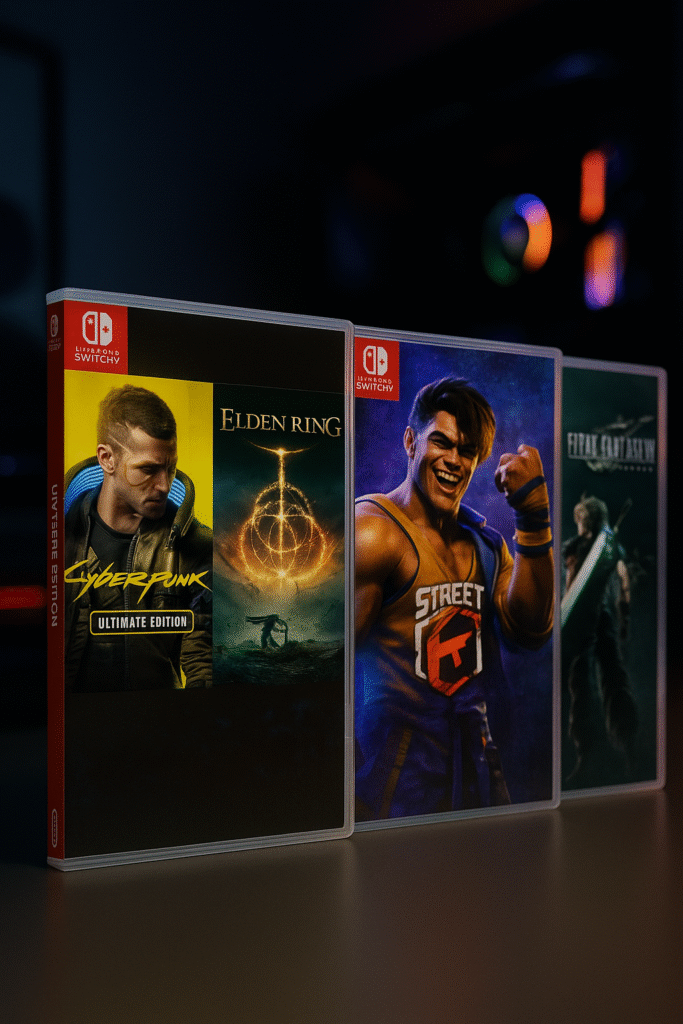
Available now:
- Cyberpunk 2077: Ultimate Edition
- Elden Ring – Tarnished Edition
- Street Fighter 6
- Final Fantasy VII Remake Intergrade
- Civilization VII
Coming soon:
- Madden NFL 26 (August 2025)
- Call of Duty: Black Ops 7 (rumored)
- Microsoft exclusives (Halo, Flight Simulator)
Plus, you get backward compatibility with 15,000+ existing Switch games from both Nintendo and third-party developers. Games like Batman: Arkham Knight and The Witcher 3 run significantly better on Switch 2 without any updates needed.
Nintendo Switch 2 vs Switch 1: What’s Actually Different?
The upgrades are substantial:
| Feature | Switch 1 | Switch 2 |
|---|---|---|
| Screen | 6.2″ 720p | 7.9″ 1080p |
| Docked Resolution | 1080p | 4K at 60fps |
| Handheld Refresh Rate | 60Hz | 120Hz |
| Storage | 32GB | 256GB |
| RAM | 4GB | 12GB |
| Joy-Con Attachment | Plastic rails | Magnetic |
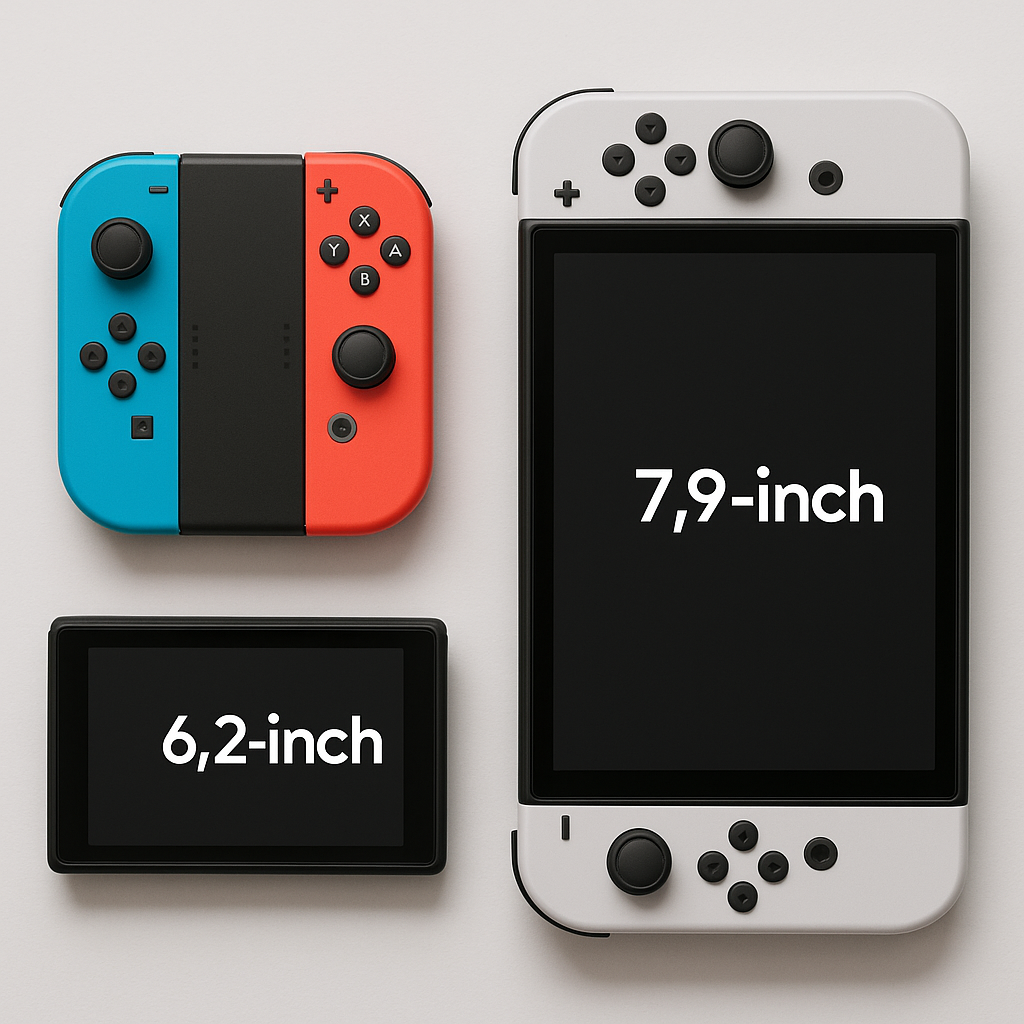
The Joy-Con 2 improvements are real. The magnetic attachment feels premium, and the new “circles” (analog sticks) are notably smoother than the original’s problematic sticks. Early reports suggest they’re more durable, though time will tell if “circle drift” becomes an issue.
What’s missing: No OLED screen (despite rumors), and inexplicably, no menu music. Nintendo added music to the setup but not the home screen – a baffling choice that frustrated many users.
Why Is Everything So Expensive?
Game prices have increased:
- Mario Kart World: $79.99 (+$20 over typical Switch games)
- Switch 2 Edition upgrades: $10 each
- Pro Controller 2: $89.99 (+$20 over original)
Nintendo cites inflation and “new features and tech” as justification for the $50 price increase over the original Switch’s 2017 launch price. When adjusted for inflation, the Switch 2 costs about the same as the original did.
International pricing varies wildly. While US gamers pay $450, European buyers face €470-590 depending on country, and Brazilian prices are significantly higher due to import duties.
Availability: When Can You Actually Buy One?
The Switch 2 launched 6/5/2025 and quickly became Nintendo’s fastest-selling console ever, selling 3.5 million units in its first four days. Demand vastly exceeded supply.
Restock situation:
- Major retailers get weekly drops (usually Thursdays)
- Nintendo’s online store uses a lottery system for direct purchases
- Some regions still face severe shortages
Pro tip: Follow major retailers’ social media for restock alerts. GameStop, Best Buy, and Target typically announce drops 24 hours in advance.
Can You Mod or Homebrew the Switch 2?
Not yet, but it’s inevitable. The console launched with firmware 18.0.0, which has no known exploits. However, early security researchers have already identified potential vulnerabilities.
What we know:
- The custom Nvidia T239 chip has different security measures than Switch 1
- No hardware exploits like RCM mode on early Switch units
- Software-based exploits will likely emerge within 6-12 months
For now, homebrew enthusiasts should stick with their original Switch units, especially unpatched V1 models.
Will There Be a Switch 2 OLED?
Probably, but not soon. Nintendo typically releases mid-generation refreshes 3-4 years after launch. Given that the Switch OLED arrived 4 years after the original Switch, expect a Switch 2 OLED around 2028-2029.
Why no OLED at launch? Cost and supply chain constraints. The 7.9″ 1080p LCD was likely chosen to hit the $450 price point while supporting 120Hz refresh rates. OLED panels with those specs would have pushed the price to $550+.
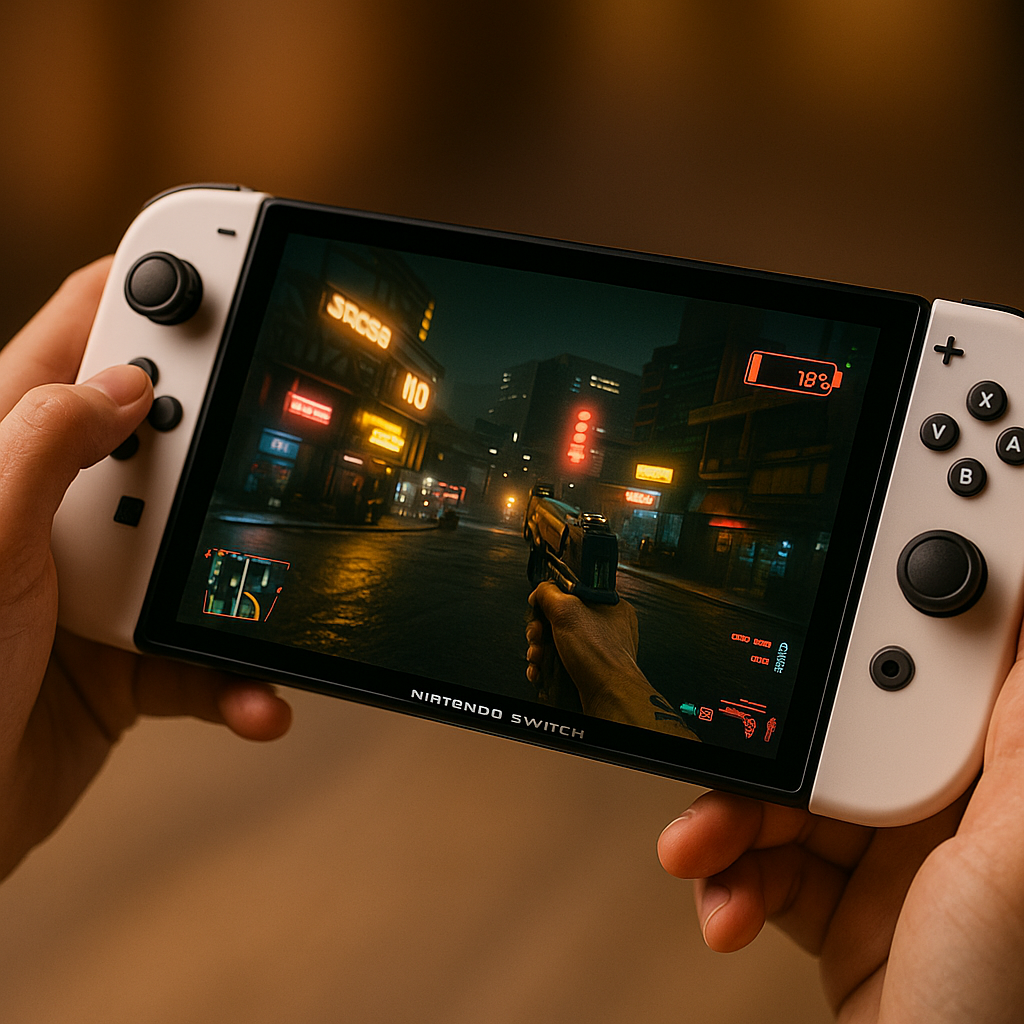
4K Gaming: Can It Really Do 4K 120Hz?
No. The Switch 2 supports either:
- 4K at 60Hz (docked only)
- 1080p/1440p at 120Hz (docked or handheld)
You have to choose between “prettier” (4K) or “smoother” (120Hz). Most TVs don’t support 4K 120Hz anyway, so this limitation affects few users in practice.
Missing Features That Annoy Users
No menu music. The setup has a catchy tune, but the home screen is silent. This feels like an oversight given how much personality the 3DS and Wii U menu music added.
No built-in voice chat without accessories. GameChat requires either the $60 Switch 2 camera or a compatible USB-C camera. Built-in voice chat only works with the console’s microphone in handheld mode.
GameChat is temporary free. Voice and video chat is free until March 31, 2026, then requires Nintendo Switch Online – another subscription to consider.
The Verdict: Should You Buy It Now?
Buy if:
- You have an original Switch (big upgrade)
- You want Mario Kart World immediately
- You’re new to Nintendo gaming
- Performance issues on Switch 1 frustrated you
Wait if:
- You have a Switch OLED and are happy with it
- You’re hoping for more exclusives beyond Mario Kart
- You want a potential OLED model
- $450 feels steep for your budget
Alternative strategy: Wait for the holiday season. More games will be available, potential bundles might offer better value, and any early hardware issues will be resolved.
The Switch 2 isn’t perfect – the battery life disappoints and the price increase stings. But for most gamers, especially those upgrading from older hardware, the performance improvements and access to both new exclusives and an enhanced back catalog make it worthwhile.
The real question isn’t whether the Switch 2 is good (it is), but whether you need those improvements right now. For Mario Kart fans and performance-focused gamers, the answer is yes. For everyone else, there’s no shame in waiting.
Where to Buy Nintendo Switch 2
If you’ve decided to take the plunge, here are the best places to snag one:
🎮 Nintendo Switch 2 Console on Amazon – Often has the best stock notifications and fast shipping
🎮 Nintendo Switch 2 + Mario Kart Bundle on Amazon – $499 bundle saves you $30 compared to buying separately
🎮 Pro Controller 2 on Amazon – Essential if you’re planning serious gaming sessions
💡 Pro tip: Set up stock alerts on multiple retailers. The console sells out within minutes of restocks.
Heads-up: some links above are affiliate links. If you buy, TechIsHub may earn a small commission—at no extra cost to you. Helps keep the site ad-light and tea-fuelled ☕.
Frequently Asked Questions
Q: How long does the Nintendo Switch 2 battery actually last?
A: Real-world battery life ranges from 2.5 hours (demanding games like Cyberpunk 2077) to 6 hours (lighter indie games). Most AAA games average 3-4 hours of playtime per charge.
Q: Can you play original Switch games on Switch 2?
A: Yes! The Switch 2 is backward compatible with over 15,000 Switch games, both physical and digital. Most games run better on Switch 2 without needing updates, though only one game (Nintendo Labo VR) is completely incompatible.
Q: Is the Switch 2 worth it if I already have a Switch OLED?
A: It depends on your priorities. If you’re happy with your OLED’s performance and screen quality, waiting might be wise. Upgrade if you want Mario Kart World, better performance in demanding games, or 4K docked gaming.
Q: Why is the Switch 2 more expensive than the original Switch?
A: Nintendo cites inflation, improved hardware (10x more powerful graphics, larger screen, more storage), and new features like magnetic Joy-Cons and GameChat. Adjusted for inflation, the price increase is about $50 compared to 2017.
Q: Can you do 4K gaming at 120Hz on Switch 2?
A: No. The console supports either 4K at 60Hz or 1080p/1440p at 120Hz when docked. You must choose between higher resolution or higher refresh rate.
Q: When will the Switch 2 be back in stock?
A: Major retailers typically restock weekly (often Thursdays). Follow GameStop, Best Buy, Target, and Amazon’s social media for restock alerts. Nintendo’s direct store uses a lottery system for purchases.
Q: Will there be a Switch 2 OLED model?
A: Nintendo hasn’t announced one, but based on their pattern with the original Switch, a Switch 2 OLED could arrive 3-4 years after launch (around 2028-2029).
Q: Can you mod or homebrew the Switch 2?
A: Not currently. The Switch 2 launched with firmware 18.0.0 which has no known exploits. Security researchers are working on it, but software-based exploits likely won’t emerge for 6-12 months.

